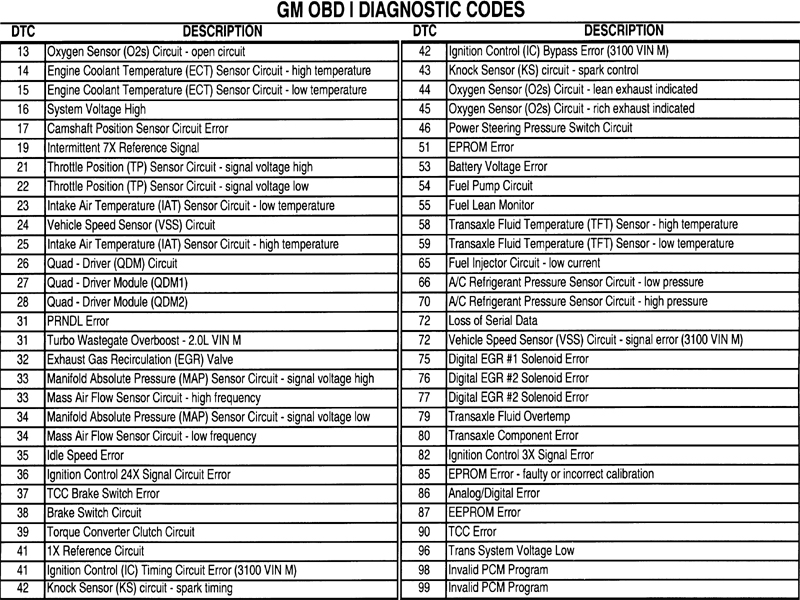Decoding the Enigma: P0171 - Your Car's Cryptic Message
Your car's dashboard suddenly illuminates with a cryptic warning light. A quick check with your OBD-II scanner reveals the ominous code: P0171. System Too Lean (Bank 1). What does it mean? Is your car about to explode? Probably not, but it's definitely a signal your engine isn't happy. This article delves into the world of the P0171 diagnostic trouble code, demystifying its meaning and offering a roadmap to navigate this common automotive headache.
The P0171 code indicates that the air-fuel mixture entering your engine's cylinders is too lean, meaning there's too much air and not enough fuel. This imbalance can lead to a variety of performance issues, from rough idling and reduced power to decreased fuel efficiency and potential engine damage. Understanding this code is the first step towards restoring your car's performance and preventing further complications.
The OBD-II system, standardized in the mid-1990s, revolutionized automotive diagnostics. Codes like P0171 provide a universal language for identifying engine problems, replacing the guesswork of yesteryear with precise, data-driven insights. This standardization allows mechanics and car owners alike to quickly pinpoint the source of an issue, saving time and money.
While the P0171 code specifically refers to "Bank 1," this simply designates the side of the engine containing cylinder #1. Most four-cylinder engines have only one bank, while V6 and V8 engines typically have two. The underlying issue – a lean air-fuel mixture – remains the same regardless of the bank.
Several culprits can contribute to a P0171 code. A faulty mass airflow (MAF) sensor, a vacuum leak in the intake system, a malfunctioning oxygen sensor, or a problematic fuel injector are common causes. Less frequently, issues with the fuel pump, fuel filter, or even the engine control unit (ECU) can also trigger this code. Pinpointing the exact source requires a systematic diagnostic approach.
A vacuum leak disrupts the carefully calibrated air-fuel ratio by allowing unmetered air into the engine. This extra air leans out the mixture, triggering the P0171 code. A faulty MAF sensor, responsible for measuring the amount of air entering the engine, can also contribute to this imbalance by providing inaccurate readings to the ECU.
One benefit of addressing a P0171 code promptly is improved fuel economy. A correctly balanced air-fuel mixture ensures optimal combustion, maximizing the energy extracted from each drop of fuel. Another benefit is restored engine performance. A lean mixture can lead to hesitation, rough idling, and reduced power. Fixing the underlying issue restores smooth, responsive performance. Finally, addressing this code can prevent potential long-term engine damage. Prolonged operation with a lean mixture can lead to increased engine temperatures and potential damage to internal components.
A step-by-step guide to diagnosing P0171 might involve: 1) Inspecting the intake system for vacuum leaks. 2) Checking the MAF sensor for contamination or damage. 3) Testing the oxygen sensors for proper function. 4) Examining fuel injectors for clogging or leaks. Each step helps narrow down the potential causes and identify the root of the problem.
Advantages and Disadvantages of OBD-II Codes Like P0171
| Advantages | Disadvantages |
|---|---|
| Precise Diagnostics | Requires a Diagnostic Tool |
| Saves Time and Money | Doesn't pinpoint the exact component failure, only the system. |
| Empowers Car Owners | Can be misleading without proper interpretation. |
Five best practices for dealing with a P0171 code: 1) Use a quality OBD-II scanner. 2) Consult reliable repair manuals. 3) Address the issue promptly. 4) Consider professional help for complex issues. 5) Perform regular maintenance to prevent future problems.
FAQs: What does P0171 mean? What causes P0171? How do I fix P0171? Can I drive with a P0171 code? Is P0171 serious? What is a lean air-fuel mixture? How can I prevent P0171? What tools do I need to diagnose P0171?
Tips and tricks: Check vacuum hoses for cracks or looseness. Clean the MAF sensor with specialized cleaner. Monitor fuel trims using an advanced scan tool.
The P0171 diagnostic trouble code, while initially intimidating, is ultimately a valuable tool for maintaining your vehicle's health. Understanding its meaning, potential causes, and solutions empowers you to address the underlying issue and prevent further complications. By taking a proactive approach to diagnostics and utilizing the information provided by OBD-II codes like P0171, you can keep your car running smoothly and efficiently for years to come. Don't ignore your car's cryptic messages. Decode them, understand them, and take action. Your engine will thank you.
Epic nursing graduation slogans inject some inspiration
Unlocking radiant skin your daily facial care ritual
Powering your adventures the best dual purpose battery for boats

P0171 Check Engine Code | Innovate Stamford Now

Check Engine Code P0171 Honda Accord | Innovate Stamford Now

Diagnostic Trouble Code P0171 | Innovate Stamford Now

Car Code P0171 System Too Lean Bank 1 | Innovate Stamford Now

car diagnostic code p0171 | Innovate Stamford Now

Bmw P0171 Fault Code P0171 Symptoms Causes Fix | Innovate Stamford Now

Diagnostic Code P0171 And P0174 | Innovate Stamford Now

Engine Trouble Code P0171 | Innovate Stamford Now

Toyota diagnostic codes p0171 | Innovate Stamford Now

Check Engine Code P0174 Ford | Innovate Stamford Now

Diagnostic Code P0171 And P0174 | Innovate Stamford Now

Engine Diagnostic Code P0171 | Innovate Stamford Now

Car Diagnostic Code P0171 | Innovate Stamford Now

2006 Gmc Sierra Check Engine Codes C0201 | Innovate Stamford Now